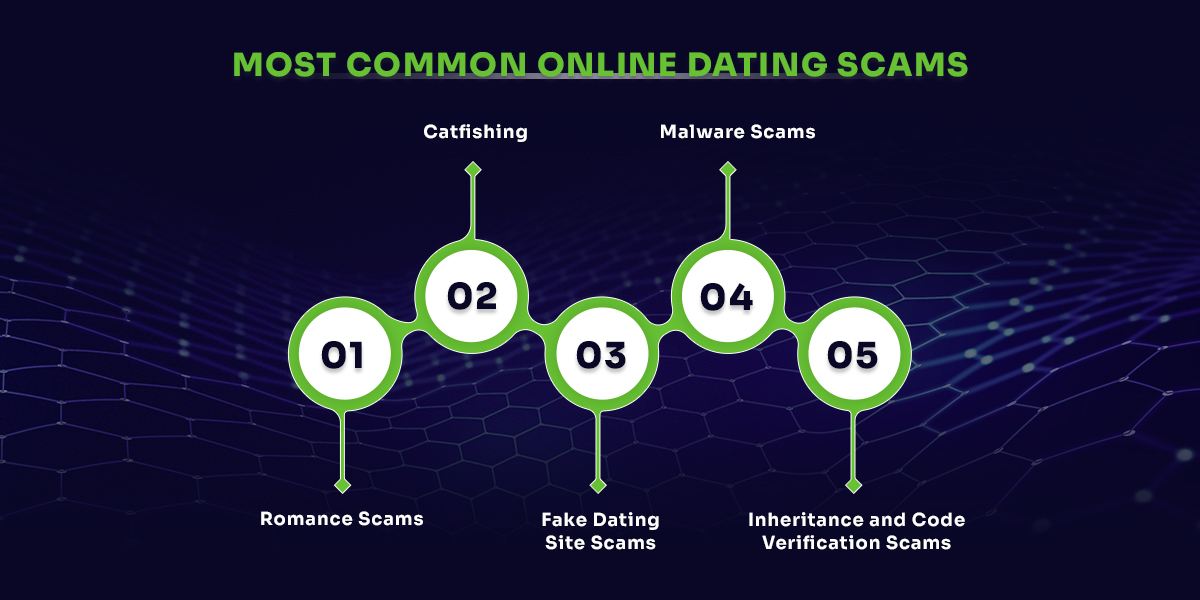Finding love is just a click away, with countless platforms connecting people from across the globe.
In 2023, online dating became a major trend, with over 17% of the American population embracing these digital platforms.
However, as these platforms provide convenience and global reach for those in search of romance, they also bring the essential need for ensuring security and privacy. Navigating the digital dating scene demands a balance between the thrill of new connections and the responsibility of protecting personal information.
This blog post dives into the importance of online dating identity verification and how it can help create safer dating experiences.
Why Is Identity Verification Important for Online Dating Apps?
Inclusion and accessibility are key to successful online dating. However, without proper online dating identity verification, these platforms face significant risks, including fraud, misrepresentation, and underage users accessing adult content. The need for verifying user identities is crucial.
Manual age verification for online dating can be challenging. Depending on self-certification or basic document checks can be inefficient and prone to errors. This is where technology can come into play. It can provide automated solutions that make the process smoother and more secure.
The widespread issue of fake profiles and misrepresentation further emphasizes the need for strong online dating identity verification. Users can easily create fake identities, which can lead to safety concerns and poor experiences. Implementing effective verification processes is essential for creating a trustworthy dating environment.

The Role of Technology in Age Verification
Technological advancements have revolutionized age verification methods, making them more efficient and reliable.
1. Traditional Verification Methods
Traditional methods, such as submitting government-issued IDs and self-certification, have been the standard for age verification. However, they are often cumbersome and susceptible to fraud.
2. Automation of Verification Processes
Automation streamlines the verification process, offering real-time solutions that reduce friction and enhance the user experience. By leveraging technology, dating platforms can efficiently verify identities without compromising on security.
3. Integration with ID Scanning and Biometric Recognition Systems
Advanced systems integrate ID scanning and biometric recognition, providing an additional layer of security. These methods ensure that users are who they claim to be, minimizing the risk of fraudulent activity.
4. AI for Detecting Fake IDs
Artificial intelligence plays a crucial role in detecting fake IDs by analyzing patterns and anomalies. This technology helps identify fraudulent documents, ensuring only genuine users gain access to the platform.
5. Real-Time Verification for Faster Decisions
Real-time verification enables platforms to quickly authenticate users, reducing delays and improving the overall experience. This speed and efficiency are critical in maintaining user satisfaction and preventing potential security breaches.
6. Compliance with Legal and Regulatory Requirements
By employing robust verification systems, dating platforms can ensure compliance with legal and regulatory requirements. This adherence not only protects the platform from penalties but also builds trust with users.
7. Enhanced Security to Prevent Underage Access
Implementing stringent verification measures is essential to prevent underage users from accessing adult content. By doing so, platforms create a safer environment for all users and uphold their reputation as responsible entities.
8. Use of Mobile Apps for Remote Verification
Mobile apps offer a convenient way for users to verify their identities remotely, enhancing accessibility and user experience. This flexibility allows platforms to cater to a broader audience while maintaining stringent security standards.
9. Multi-Layered Authentication for Accuracy
A multi-layered approach to authentication ensures higher accuracy and reliability. By combining various verification methods, platforms can effectively prevent fraud and maintain a secure environment.
10. Integration with Ecommerce Platforms and Retail POS Systems
Integrating verification systems with ecommerce and retail POS systems can streamline processes and enhance security. This capability offers additional opportunities for innovation and expansion within the online dating industry.
How Identity Verification Works in Online Dating Apps
Identity verification in online dating apps is a crucial process to ensure user authenticity and reduce the risk of scams.
Here are some common methods used:
User Registration
The verification process begins with user registration, where users provide their basic information. This step is crucial for establishing a secure foundation for further verification.
Document Upload and AI Analysis
Users upload a government-issued ID, which is then analyzed by AI systems. The technology checks the authenticity of the document and verifies that the details match those provided during registration.
Facial Recognition and Video Verification
Facial recognition technology adds an additional layer of security. By comparing the user’s selfie with their ID photo, platforms can confirm that the person in the ID is the same individual creating the profile.
Social Media Integration and Two-Factor Authentication (2FA)
Integrating with social media and implementing 2FA enhances the verification process. This approach cross-references user information, ensuring consistency and accuracy.
Background Checks
For added security, platforms may conduct background checks, verifying users’ claims and ensuring they have no history of fraudulent activity.

Most Common Online Dating Scams
Here are some of the most common online dating scams:
1. Romance Scams
Romance scams involve creating a fake relationship to steal money or personal information from victims. Scammers often play charming roles and engage in emotional conversations to build trust.
As the relationship develops, they typically make up stories about financial emergencies or health problems, pushing victims to send money or share sensitive details. These scams take advantage of emotional weaknesses, making them particularly sneaky and hard to spot.
2. Catfishing
Catfishing happens when someone makes a fake dating app profile to trick others. This can include using stolen photos or inventing detailed backstories to gain the trust of unsuspecting users.
Victims often invest a lot of emotional energy into these connections, leading to heartbreak when the truth comes out. In many cases, catfishing can cause emotional distress, identity crises, and financial loss, as the deceiver may eventually ask for money or other resources.
3. Fake Dating Site Scams
Scammers set up fake dating websites that look very much like real ones to gather users’ personal and financial information. These sites often feature attractive profiles and tempting messages to get people to sign up.
Once users register, their information can be used for identity theft or sold on the dark web. Many victims don’t realize anything is wrong until they see unauthorized transactions or experience a loss of privacy, making these scams especially dangerous and widespread.
4. Malware Scams
Malware scams trick users into downloading harmful software that compromises their devices and data. Scammers may disguise malware as dating apps or appealing offers, tempting users to click on links that install harmful programs.
Once downloaded, this software can steal personal information, track online activity, or even lock users out of their devices. This can result in identity theft, financial loss, and other serious issues, underscoring the importance of being careful about what you download and where you enter personal information.
5. Inheritance and Code Verification Scams
Inheritance scams attract victims by promising sudden wealth in exchange for upfront fees, often claiming that the victim has inherited money from a distant relative. Scammers create detailed stories to make their offers seem real, sometimes providing fake documents to persuade victims to send money to claim their inheritance.
Similarly, code verification scams involve tricking victims into giving authentication codes received via text or email. Scammers use these codes to access victims’ accounts, resulting in unauthorized transactions and significant financial losses.
Benefits of Using Verified Online Dating Apps
Using verified online dating apps offers several benefits:
1. Enhancing Safety and Security
Implementing online dating identity verification enhances safety by ensuring that users interact with real people, reducing the risk of encountering scammers or fake profiles.
2. Finding Genuine Connections
Verification promotes authenticity, fostering genuine connections and meaningful interactions on the platform.
3. Improving User Experience
A streamlined verification process improves the overall user experience, offering quick and hassle-free access to the platform.
Impact of Age Verification on the User Experience
Age verification plays a pivotal role in shaping the user experience by influencing several key aspects:
1. Streamlined Verification Process
Automated age verification processes reduce friction, providing users with a seamless onboarding experience.
2. Enhanced Security and Trust
Effective age verification builds trust among users, increasing their confidence in the platform’s safety measures.
3. Positive Impact on User Retention
An enjoyable experience, backed by robust security, leads to higher user retention rates and increased satisfaction.
Best Practices for Online Dating Platforms
1. Encourage Meaningful Interactions
Facilitate genuine interactions among users by fostering a community-driven approach to online dating.
2. Leverage AI for Match Accuracy
Employ AI algorithms to improve match accuracy, increasing the likelihood of successful connections.
3. Enable Video Profiles and Virtual Dates
Offering video profiles and virtual dates provides users with a more authentic experience, reducing the prevalence of catfishing.
4. Optimize for Mobile and Offer Safety Resources
Ensure your platform is mobile-friendly and provide users with in-app safety resources to keep them informed and protected.
5. Offer Gamification Elements
Introduce gamification features to make the user experience enjoyable and engaging, promoting user retention.
Conclusion
Establishing a strong identity verification system is non-negotiable for online dating platforms. By ensuring user safety and fostering genuine connections, business owners can build trust and loyalty among their user base.
To stay competitive and meet the demands of an evolving digital landscape, it’s essential to prioritize secure verification processes. By doing so, you not only enhance the user experience but also create a safer, more authentic online dating environment for all.
To learn more about how FTx Identity can benefit your business, be sure to get in touch with us to book a consultation and experience a demo!
